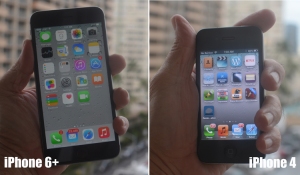 Playing High-Action Video Games May Speed Up Learning, Studies Say by Sarah D. Sparks in Education Week 11/13/14
Playing High-Action Video Games May Speed Up Learning, Studies Say by Sarah D. Sparks in Education Week 11/13/14
Sparks reports on a study in the December issue of Human Movement Science that contradicts earlier research which connects extensive video game play to attention-deficit disorders and other impulsiveness disorders. The authors contend that “game playing can improve students’ attention control” and create better learners.
Smartphone addicts: A project-based learning activity by Alexandra Lowe in TESOL blog 11/5/14
Lowe describes how she used the idea of a Smartphone survey to move English language use outside the classroom. In groups students developed and conducted surveys about Smartphone use.
Learning languages is a workout for brains, both young, old by Victoria M. Infivero from Science Daily 11/12/14
Using MRI scans, researchers at Penn State have demonstrated that even the adult brain grows and changes when learning a new language. They are also using “virtual 3-D-like environments with situation-based learning to help the brain make some of those new connections more effectively.”
Report Urges Caution on Approaches Equating Technology in Schools with Personalized Learning by William J. Mathis and Noel Enyedy, from NEPC 11/24/14
This policy brief addresses the increased use of technology in schools and questions its effectiveness. The authors point to a number of factors, including the fact that teaching practices and learning outcomes often have not changed.
Filed under: Games, K-12 Schools, Language, Mobile Technology | 3 Comments »














 John Mark Walker: "If educational communities can continue to push platform integration and content portability, in the future, students may be able to design their own personalized degrees from smaller, modular chunks that cross institutional barriers" (
John Mark Walker: "If educational communities can continue to push platform integration and content portability, in the future, students may be able to design their own personalized degrees from smaller, modular chunks that cross institutional barriers" ( Richard Koubek
Richard Koubek
 Judith McDaniel
Judith McDaniel Tim Fraser-Bumatay: "Although the format leaves us far-removed physically, the online forum has its own sense of intimacy" (Judith McDaniel, "
Tim Fraser-Bumatay: "Although the format leaves us far-removed physically, the online forum has its own sense of intimacy" (Judith McDaniel, " Ryan Kelly: "For me to be able to work with people clear across the country for an extended period of time opened me up to new things" (Judith McDaniel, "
Ryan Kelly: "For me to be able to work with people clear across the country for an extended period of time opened me up to new things" (Judith McDaniel, " Daniel Herrera: "As a Mexican American, I know that words of identity are powerful; so to discuss white privilege with my professor and classmates in a face-to-face class would have been terrifying and impossible" (Judith McDaniel, "
Daniel Herrera: "As a Mexican American, I know that words of identity are powerful; so to discuss white privilege with my professor and classmates in a face-to-face class would have been terrifying and impossible" (Judith McDaniel, "












 Cathy Gunn: "Traditional methods for effecting change at my institution aren’t getting us even to a trickle yet, let alone to thinking about or planning for a wave!" (
Cathy Gunn: "Traditional methods for effecting change at my institution aren’t getting us even to a trickle yet, let alone to thinking about or planning for a wave!" (










